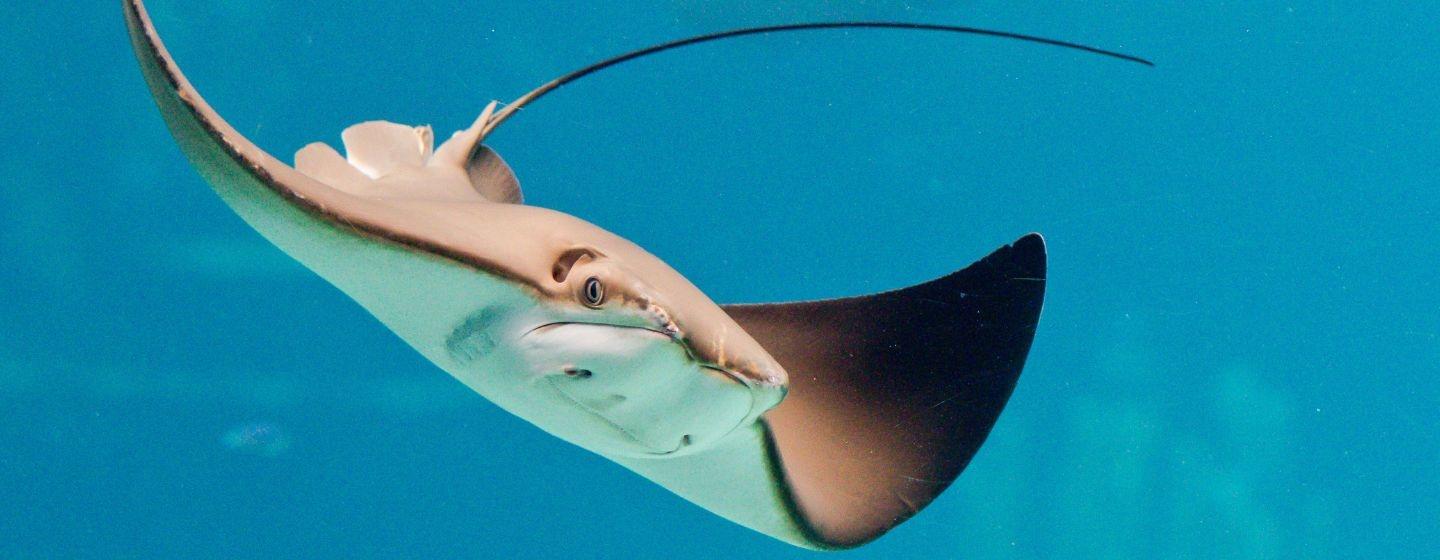How a Stingray Likely Got Pregnant on Her Own


Updated June 6, 2024
It turns out that Charlotte the stingray is no longer pregnant. In fact, she’s suffering from a rare medical condition that affects her reproductive health.
“Charlotte has developed a rare reproductive disease that has negatively impacted her reproductive system,” says the Aquarium & Shark Lab by Team ECCO through a Facebook post. “The findings are truly a sad and unexpected medical development.”
Earlier this year, the aquarium made national headlines when it claimed that Charlotte was pregnant, even though she’s isolated from male stingrays. The aquarium suggested that she may have been impregnated by a male shark that shares her tank. This is impossible, for multiple reasons detailed below. The likely explanation is that Charlotte’s possible pregnancy was due to parthenogenesis, a type of asexual reproduction.
So far, we don’t know how long Charlotte has been ill or if she was ever pregnant.
Let’s get this out the way: it’s impossible for a shark to impregnate a stingray. But when a lone female stingray named Charlotte unexpectedly became pregnant, her keepers joked that one of her shark tank-mates could be responsible. Then, of course, the headlines followed.
Charlotte is one of the animals housed at Hendersonville’s Aquarium and Shark Lab by Team ECCO.
Her caretakers noticed a lump on her back and worried it was a tumor. After an ultrasound, they were shocked to see she was pregnant, according to an interview with The News and Observer.
“We were all like, ‘Shut the back door. There’s no way,’” Executive Director Brenda Ramer told the paper. “We thought we were overfeeding her. But we were overfeeding her because she has more mouths to feed.”
But it’s not the male shark’s fault that Charlotte is pregnant. Hybrids only occur when the species involved are closely related. Think horses and donkeys (mules), polar bears and grizzly bears (pizzlies), coyotes and wolves (coywolves). Although sharks and stingrays are related and share a common prehistoric ancestor, they are separated by 300 million years of evolution and don’t share enough genetic features, including chromosomes, to mate.
The most likely explanation for Charlotte’s pregnancy is a phenomenon called parthenogenesis, which occurs when females can reproduce without mating. Yes, “immaculate conceptions” are possible among a diverse group of organisms, including plants, insects, fish, reptiles and birds.
“We’re finding that parthenogenesis happens more often than we thought,” said Dr. Dan Dombrowski, the chief veterinarian at the North Carolina Museum of Natural Sciences in Raleigh.
In good, old-fashioned sexual reproduction, genetic material from an egg and sperm come together to form offspring. But some species can produce eggs that have all the genetic material needed to create offspring. In fact, some wasps, lizards and crustaceans reproduce only this way.
Another version of parthenogenesis is called automixus. When an egg cell is developing, it replicates, reorganizes and separates. During that process, leftover genetic material called polar bodies can act like sperm and fertilize the egg. The result is offspring that’s slightly different genetically to the mother.
“In the last 20 to 30 years, as it’s gotten easier to do genetic testing, we’re finding that more and more species are able to do this,” said Dombrowski. “It’s often described as a stress response, or a way to save genetic material.”
Because researchers can’t easily follow animals in the wild, we often discover parthenogenesis in zoos or aquariums. And it’s usually a big surprise to everyone.
“There’s more fluidity to this than we thought,” said Dombrowski. “We’ve found everything from honeybees to Komodo dragons to California condors that can do it. We keep adding animals to the list.”
In the meantime, Charlotte the stingray is expected to give birth soon. She’s being tracked by three cameras, and you can follow her journey on the Aquarium and Shark Lab by Team ECCO’s Facebook page.